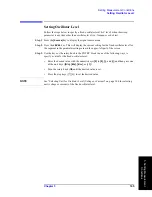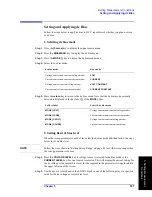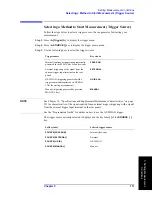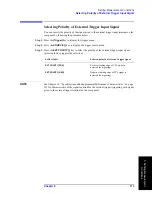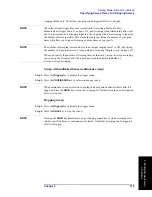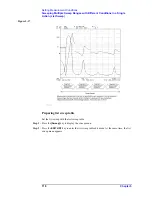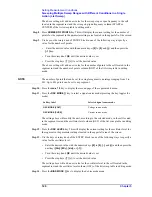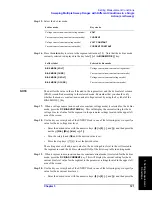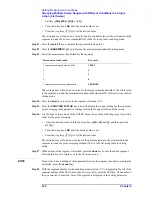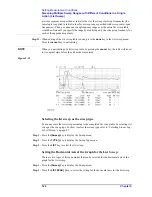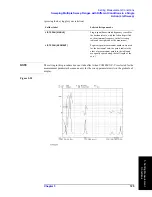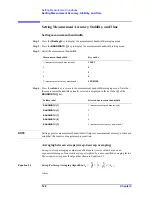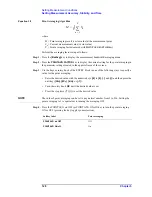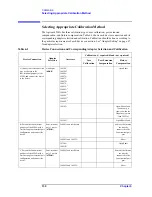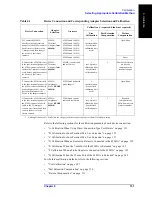
116
Chapter 5
Setting Measurement Conditions
Sweeping Multiple Sweep Ranges with Different Conditions in a Single
Action (List Sweep)
Sweeping Multiple Sweep Ranges with Different Conditions
in a Single Action (List Sweep)
If you select the linear sweep or log (logarithmic) sweep as the sweep type setting, the
actual measurement points are automatically determined depending on the settings of the
sweep range and the number of measurement points. For a list sweep, on the other hand,
the user sets the number of measurement points, oscillator level, dc bias level,
measurement bandwidth, and point averaging count for individual frequency sweep range
units called segments, and then all of the segments are swept in a single sweep in the
specified order.
The advantage of a list sweep is that, by setting efficient and optimum measurement
conditions for each specified frequency range (segment), the efficiency (speed) of
measurement for a single sweep can be improved. Furthermore, a list sweep permits the
following strategies.
•
You can perform sweep measurement for the range of your interest, skipping frequency
ranges you do not need to measure.
•
You can set optimum measurement conditions for each specified frequency range
(segment). For example, for segments you want to measure with higher stability, higher
accuracy, and higher (finer) frequency resolution, you can increase the averaging count,
the measurement bandwidth, and the number of measurement points, while, for other
segments, specifying conditions to speed up the measurement.
•
You can use the list sweep to compare traces under different measurement conditions.
For example, by setting all segments to the same frequency range and changing
conditions such as oscillator level or dc bias level for each segment, you can observe
the change in the characteristics. In this case, you would usually set the horizontal axis
of the graph to the single span mode, which is the frequency axis common to all
segments. For how to compare traces using the list sweep function, refer to
“Comparing traces using the list sweep function” on page 186.
For the list sweep, you can change the color of traces for each segment. This function will
help you to compare traces.
Summary of Contents for 4294A
Page 1: ......
Page 2: ......
Page 4: ......
Page 5: ......
Page 6: ......
Page 8: ......
Page 16: ...8 ...
Page 30: ...22 Chapter1 Installation Power Cable Figure 1 2 Alternative Power Cable Options ...
Page 70: ...62 Chapter3 Front Rear Panel and LCD Display Items Displayed on the LCD ...
Page 436: ...428 AppendixB Key Definitions Softkeys displayed by pressing the Recall key ...
Page 454: ...446 AppendixC Error messages WRONG I O PORT DIRECTION ...
Page 468: ......




